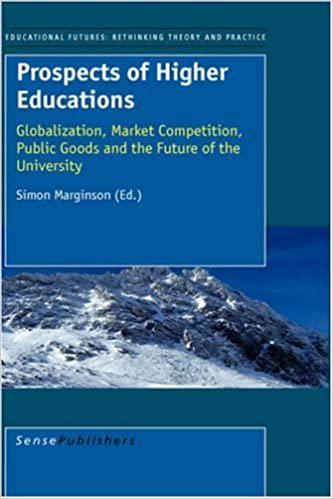Higher education’s recognition of America’s emerging workforce’s “traits” will go a long way to ensuring the foundation for future success of U.S. competitiveness, innovation, and productivity strategies.
by Thomas A. HemphillAmerican colleges and universities, where the nation’s critical human capital is educated to later contribute their genius to a thriving, innovative U.S. economy, are now confronted by impending demographic and technological disruptions. Demographically, from 2010 to 2019, the U.S. Census Bureau reports that the percentage of Americans aged twenty-five and older earning a bachelor’s degree or a graduate degree increased from 29.9 percent to 36.0 percent. Yet, by the end of this decade, McKinsey & Company reports that the number of high school graduates will peak at about 3.6 million students in 2026 and then decline to 3.3 million students by 2030. Further, international student enrollment in the United States—a supplemental source of new university and college student enrollment—was slowing and beginning to decline even before Covid-19 arrived in 2020. Open Doors reports that international student enrollment peaked in academic year 2018/19 at 1,095,299 before declining slightly in academic year 2019/20, the year preceding the outbreak of the Covid-19 pandemic.
Two major factors contributing to this student enrollment decline are evident. First, a 2021 survey of more than 1,000 high school students (polled three times over the previous year) undertaken by nonprofit ECMC found that high school students are increasing their focus on career training and post-college employment, with more than half reporting that they can achieve professional success with three years or less of higher education, while only one-fourth believe a four-year degree is the only route to a sustainable, well-paying job. In addition, the high cost of annual tuition and fees (and room and board) is also a major disincentive. For example, the College Board reports an annual student cost of $50,770 for private college undergraduate education, and $22,180 for in-state public colleges. Furthermore, the Princeton Review’s 2021 College Hopes & Worries Survey (after sampling 14,093 respondents) reports that a majority of high school students were applying to colleges with lower sticker prices, and another third were applying to colleges closer to their homes. Moreover, undergraduates expressed extreme dissatisfaction with virtual learning during the Covid-19 pandemic, complaining that they were paying the same tuition as they were previously paying for in-person education.

The Covid-19 pandemic resulted in a rapid transition for U.S. universities and colleges from traditional face-to-face classroom teaching to digital and online class offerings, utilizing university web platforms, supplemented with video-conferencing tools such as Zoom or Skype. Previous to the Covid-19 pandemic, many higher education institutions had begun deploying hybrid (combining online and face-to-face) and fully asynchronous (online) course formats, particularly focusing on post-baccalaureate graduate education and adult learners. However, some U.S. universities—such as the University of Phoenix (over 170,000 online undergraduate students) and Southern New Hampshire University (over 130,000 online undergraduate and graduate students)—have been at the forefront of digital and online learning for baccalaureate and master’s degrees over the last decade. Also, as of 2021, there are more than seventy fully online undergraduate and graduate degree programs (the overwhelming number of such programs offering graduate degrees), focused in the disciplines of computer science, business administration, data science, cybersecurity, and public health that can be entirely completed through a Massively Open Online Course (MOOC) digital platform, with the University of Illinois, for example, offering five master’s degree programs through a MOOC digital platform.
While many U.S. universities and colleges are returning to their pre-Covid-19 classroom teaching modes, the movement to digital and online education has accelerated. For many traditional students who want a four-year residential experience, that educational experience is now evolving. The traditional lecture format—efficient for institutional teaching but an ineffective way of teaching—is giving way to a hybrid model, one relying on the science of learning and effective learning outcomes, that incorporates a purpose-designed, digital learning platform incorporating asynchronous multimedia presentations (to be watched by students at their own pace and location); immersive off-campus practical experiences involving field-based projects (so-called “active learning’ experiences); and on-campus activities for laboratory work, synergistic small group assignments, and social interactions. A recent study focused on the post- Covid-19 future of digital learning in higher education (across six countries), found that educators and students envision an increase in hybrid educational modalities and a modest increase in asynchronous online courses.
The use of these digital learning platforms delivering so-called “commoditized knowledge,” i.e., not requiring the social experience of face-to-face instruction, to students allows for the delivery of content to large student audiences at scale, thus offering the opportunity for lower student tuition costs. A 2021 survey (consisting of a sample of 1,400 students) undertaken by Barnes and Noble Education reported that nearly 95 percent of student respondents believed that online courses should cost less than those offered in person. An example of a cost-efficient online learning model might employ narrow artificial intelligence (AI) in educational instruction systems. This AI-based personalized learning platform would respond to an individual student’s pace of learning and progress; assess the student’s progress; and recommend, or automatically deliver, specific course information for a student to review, or additional resources to consult. Coursera, a technology education company founded in 2012, is an example of a company offering online courses (utilizing narrow applications of AI) in partnership with over 250 leading university and industry partners. Coursera offers educational credentials whose content helps build skills applicable to workplace development—ranging from “stackable” certificates to bachelor’s and master’s degrees—at highly competitive tuition prices, while incorporating the scheduling flexibility required by working adults. For example, the Gies College of Business, University of Illinois at Urbana-Champagne, offers (in partnership with Coursera) its top-rated, online, heavily interactive iMBA program for under $23,500.
Robert D. Atkinson, president of the Information, Technology, and Innovation Foundation argues that the U.S. needs “well-articulated and distinct competitiveness, innovation, and productivity strategies.” As to a productivity strategy, he further argues for the development of “platform” technologies, such as broadband, smart grids and health information technology. By extension, an important productivity strategy is for the U.S. higher education sector to continue expanding its investment in innovative digital learning technologies. Universities and colleges should employ AI where possible, and expand its use to allow for greater accessibility (including through mobile electronic devices), reduced tuition cost, and provide “flexible” educational formats (e.g., “learning from everywhere” through mobile electronic devices and at the students/employees own pace) for American students (including life-long learners) who are increasingly open to hybrid learning models (at the undergraduate level) and asynchronous learning models (both entirely flexible without prescribed times for class meetings, and those courses and certificate and degree programs which employ video conferencing at the undergraduate and graduate level). In addition, the educational curriculum should be re-thought to emphasize skills that remain relevant in a dynamic global environment, such as critical and creative thinking skills, that cross intellectual boundaries and disciplines.
Lastly, MIT’s Sloan School of Management has identified five traits of the emerging post-Covid-19 workforce that U.S. higher education institutions need to develop in their students confronting a global work environment that is “more digitized, roboticized, diverse and dispersed than ever before.” First, students/employees must become data literate, as companies with more data-literate people will ultimately be the most successful. Second, these students/employees must become comfortable working with AI, machine learning, and robotics, as these technologies will be collaborating with and augmenting human labor. Third, the emerging workforce will be empowered, with a new social contract that delivers both a strong return on investment as well as organizational support for high-quality employee careers. Fourth, today’s students/employees “respect, expect, and understand the value of ‘good jobs,’” which translates into good pay and benefits, a stable and predictable schedule, a career path, security and safety, and a fair and equitable work environment. Fifth, today’s students/employees are committed to organizations advancing equitable opportunities, diversity in the emerging workforce, a strong corporate social responsibility, and proactive environmental and sustainability practices. Higher education’s recognition of America’s emerging workforce’s “traits” will go a long way to ensuring the foundation for future success of U.S. competitiveness, innovation, and productivity strategies.
Thomas A. Hemphill is the David M. French Distinguished professor of strategy, innovation and public policy in the School of Management, University of Michigan-Flint.
Image: Reuters.
Connect
Topics
Regions
© Copyright 2022 Center for the National Interest All Rights Reserved




